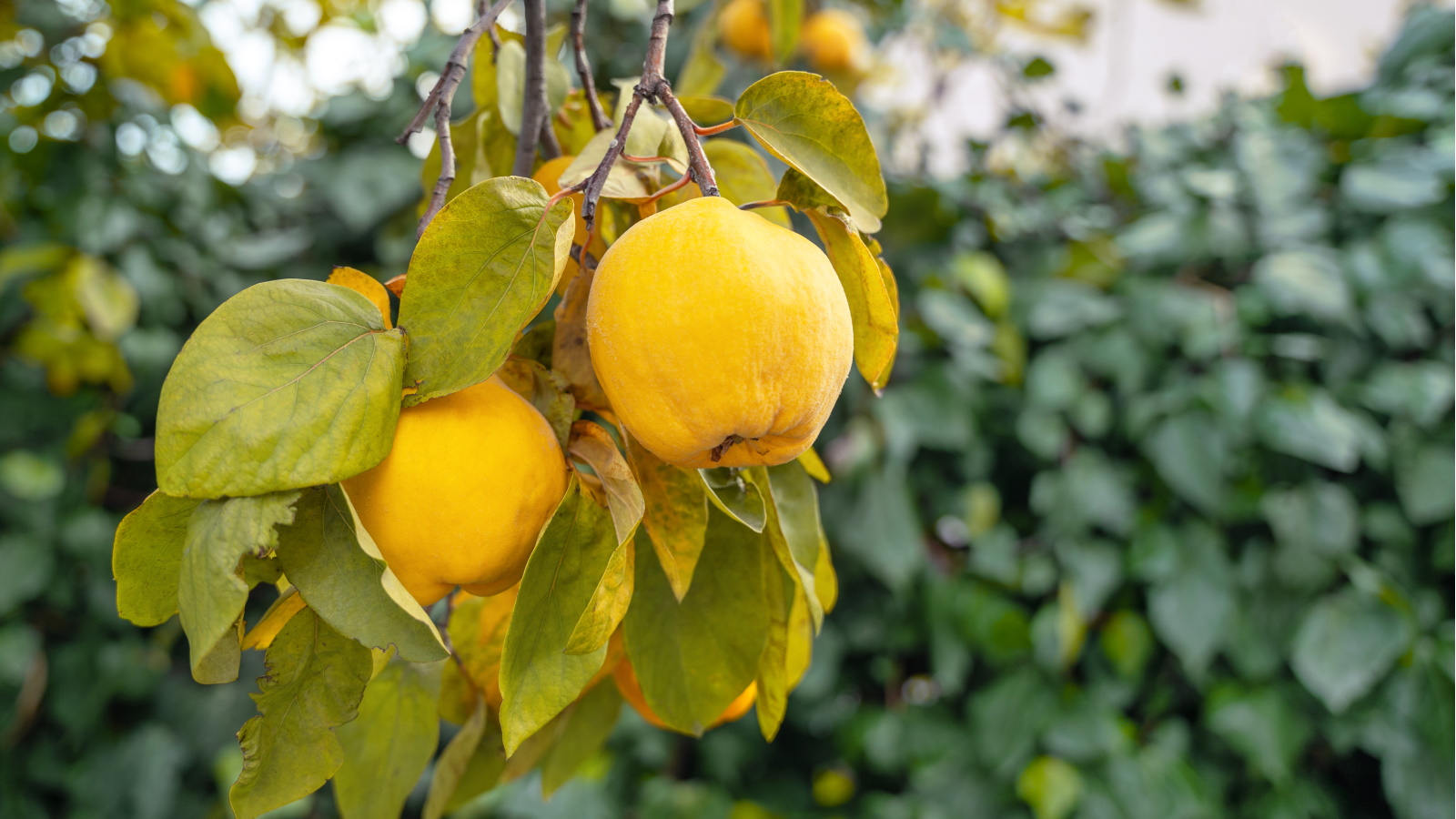
Quince is one of those fruits you may not have considered growing when you first started your own backyard orchard. However, it can be a valuable fruit tree to add to your collection because it brings so much color to the yard, with yellow fruit and pink spring flowers. Plus, quince is a delicious ingredient for a range of dishes.
Once you have started to grow a quince tree in your yard, it's not uncommon to face certain challenges. One of these being getting your tree to fruit. This can be a particular frustration when growing a range of the best fruit trees, especially when you have taken the time to provide the best care you can for them.
But you shouldn't be too quick to give up. There are a few tricks to master to get a quince tree to fruit, right from when you plant your fruit tree. Once you learn them, you can look forward to an abundant fall harvest each year. Discover our expert tips for getting a quince tree to fruit below.

3 ways to get a quince tree to fruit
Before investigating the cause behind a lack of fruit on your quince tree, there are some basics you need to know. Quince trees are hardy across US hardiness zone four to zone nine and are native to western Asian regions.
They also need to typically reach age five or six to start cropping, so don't expect to see fruit if you have only just planted a young quince in your yard. However, if you have a mature quince and it isn't producing fruit, or you want to be prepared ahead of your quince tree reaching maturity, follow our expert tips for getting a quince tree to fruit.
1. Provide your quince tree with more access to sunlight

Just like getting a pear tree to fruit, your quince tree may be struggling to crop if it is growing somewhere with lots of garden shade.
'A quince tree demands a sunny position,' says Valeria Nyman, gardening expert from gardening app Taim.io. 'Quince trees need ample light to photosynthesize effectively,' she explains.
Plants need access to the sun to carry out plant processes and access essential plant nutrients, including photosynthesis which allows a plant to turn energy into food. With a lack of energy from the sun, these processes are hindered, reducing the ability for your quince tree to fruit.
Of course, if you have a quince tree growing in a permanent position it can be tricky to move it, especially considering quince trees can reach as tall as 16ft. Instead, try pruning surrounding tree branches to allows more light in. Use essential pruning tools to do this, like these loppers from Amazon.
If you're growing a dwarf quince tree - like 'Leskovacz' - you can grow it as a fruit tree for pots. This can then be moved to a sunnier position, like a south-facing garden wall.
2. Don't overwater your quince tree

More often than not, watering your plant incorrectly is what causes problems with quince trees. This is because these trees need the water level to be just right and overwatering is a common culprit of a lack of fruit.
'They like the soil to be kept moist but water should be able to drain freely,' notes Annette Hird, gardening expert from Easy Urban Gardens.
A quince tree growing in soggy conditions can cause root rot, yellowing and drooping leaves, as well as a lack of fruit. On the other hand, it's also not wise to let your quince tree dry out entirely.
'Watering can make or break your quince's fruiting prospects. Irregular watering can lead to stunted growth and a lack of those delightful fruits,' says Valeria.
The best thing to do is monitor rainfall and use a moisture meter (from Amazon) to identify when your tree needs a top up of water - likely during hotter months.
3. Protect your quince tree from extreme temperatures

Another thing you have to be aware of when growing a kitchen garden is how temperature affects plant growth. For quince trees, this means providing sufficient warmth for the fruit to grow.
'Without enough warmth, the tree's energy gets sapped, resulting in less fruit,' Valeria notes.
That's why it's key to protect these plants from frost to help them get through winter. You can use a horticultural fleece (from Amazon) if your tree is small enough. Make sure to put this protection in place through to early spring and late frosts, otherwise blossom buds may fall off. Potted quinces can be looked after in winter in a similar manner to caring for a potted lemon tree in winter - e.g. moving them indoors.
It isn't just cold weather you have to be aware of, either: 'Severe temperature fluctuations can be disastrous for your yield,' Valeria explains. If you're set to experience particularly hot summer days, take care to water your quince more frequently to keep it hydrated and productive for fruiting.
FAQs
Will fertilizer help to get a quince tree to fruit?
Plant fertilizer can certainly aid quince fruit production: 'Like any fruiting species, a good dose of a fairly balanced fertilizer applied in late winter should help,' says Annette Hird, gardening expert from Easy Urban Gardens. You can also opt for plant food with plant fertilizer numbers that boost fruiting, i.e. a higher phosphorus volume. This fruit and bloom fertilizer from Walmart is a good choice.
How do you tell if quince fruit is ripe enough?
Quince trees start putting out fruit over the summer season, usually ripening in October and November. You will be able to tell quinces have ripened when they have turned yellow, have a sweet scent and easily come off the branches.
Planting your quince tree in well-draining soil will also help it stay healthy and increase chances of fruit production. Take care to keep on top of other fruit tree care, too, like pruning fruit trees at the right time. With a little perseverance and patience, you can harvest quince fruit from your yard every fall season.







